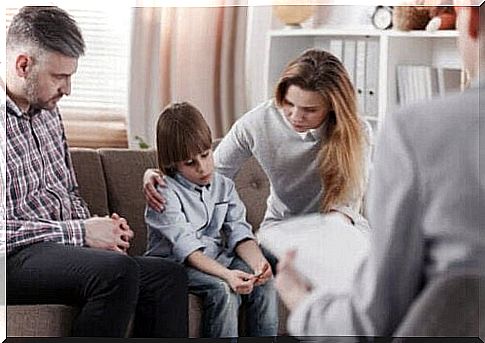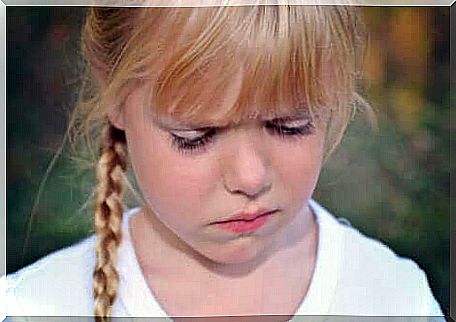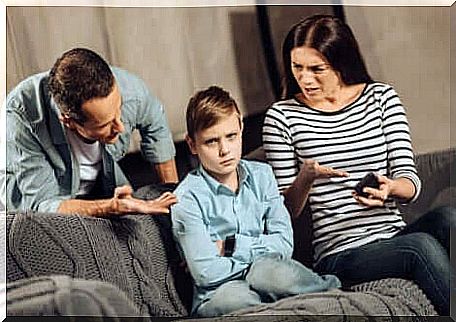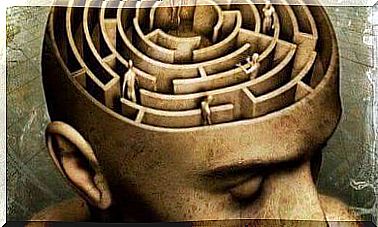Children In Therapy: Solving Dysfunctionality

Today, the number of teenagers and children in therapy is increasing. Attempts to explain the phenomenon and dysfunction these children struggle with point to social factors.
To a certain extent, family dynamics reflect the dynamics of the society in which they exist. Therefore, it is hardly surprising that children today struggle to make sense of an increasingly chaotic world. So what are the motivating factors behind their dysfunctional behavior? How can having children in therapy help?
Let’s take a deeper look at this.
Chaos on a family and social level
Primary and secondary schools are experiencing an increasing level of aggression and violence among pupils, although it would be reductionist to attribute violence only to the school environment.
However, it is worth asking ourselves why we expect schools to be free of violence when violence is a constant in all other social contexts. Traffic accidents, corruption, assaults, robberies… Even football pitches can become a place of violence.

The workplace is often an unstable environment, full of corruption and abuse. This has led to an economy defined by an ever-increasing gap between the rich and the poor, and a large population of angry people who have been deprived of their voice. As if that were not enough, television is full of shocking programs about wars between stars and people in the show business.
If society is to provide parameters for children about right and wrong, but all they see is stupidity, corruption and violence, how can we expect them to have a healthy view of the world?
Being in a constant state of crisis increases problematic situations and conflicts with the family. This in turn injects a certain amount of neurosis into each family member. Dysfunction is no longer just a trap, it attacks.
Problems at home
Family units do not exist in isolation. They are immersed in the social context and inevitably reproduce the good and bad of the broader culture to some degree.
Today’s family climate is identical to the social. People struggle to keep up with a demanding workload, and fear that they will be replaced if they fail.
At home, many couples barely talk to each other. They take care of the logistics of everyday life and child rearing. Discussions are about bills and schedules, but neglect deeper and personal questions and reflections. They do not want to disturb the sensitive balance of their existence because they are afraid that it may lead to the chaos that comes from separation. This lifestyle produces a kind of helplessness that manifests itself in unhealthy responses that grow into something big and destructive.
Children and symptoms of dysfunction
Children get stuck in these patterns of behavior and parents become less tolerant. A demanding environment with little room for complaint or emotional expression leads to violent situations. However, this climate of marital tension is even deeper. As parents constantly quarrel, they begin to involve their children in the vicious cycle of conflict.
Every child becomes part of the conflict and tends to be with one or the other parent. If the child takes the father’s side, they will be upset about everything their mother does to the father. At the same time, they will feel guilty for thinking bad things about their mother and vice versa. This cycle of guilt and anger helps maintain the tense, stressful family environment.
The communication of complexity quickly becomes complicated. Children’s emotions also begin to manifest in other contexts. In other words, they start behaving badly in the other place they are a lot: school.
Problems at school
There , the child reproduces the unhealthy communication style they have learned at home, but also releases pent-up feelings of anxiety and stress. It is enough to recreate the violent behavior they have witnessed a couple of times to be described as the “bully” at school. As soon as that happens, they are likely to develop a kind of learning disability. One thing leads to another, and they become the target of nicknames and bullying of classmates. It makes them feel outside and alone, which leads to more aggressive and violent behavior and reinforces the stamp they have received.
In the meantime, the parents are informed by the school about the child’s bad behavior and bad grades. They focus all their attention on that child and try different rewards and punitive methods to change the behavior. However, this strategy is not very effective.
Now the child is not only problematic at school, but also at home. However, there is some wisdom in this. They have managed to release pent-up emotions and get their parents to watch them. This is also a distraction from discussions that can lead to separation. This exhausting cycle repeats itself over and over again. If you do not stop it, it will lead to chaos, desperation and even mental illness.

Children in therapy can solve dysfunction
These days , it is much more socially acceptable to go into therapy than it used to be. Most people no longer associate it with being “crazy”. Instead, it is generally seen as a healthy way to address mental health issues and increase well-being. Thus, today’s parents have the opportunity to take children in therapy to help resolve the symptoms and resolve dysfunction.
Some therapists prefer to interview the parents first, and then do a series of individual sessions with the child. From the age of four and five , therapists use play therapy with patients as a way to identify and decode signs of conflict.
The symptoms the children show can express the parents’ relationship problems, intolerance to separation, a fragmented family, etc. The therapist’s job is to read the message that the symptom conveys. Family therapy is usually neat. It helps the therapist understand the dynamics of the family and the child’s resulting behavior.
Whichever therapeutic strategy is chosen, it should provide the child or teenager with the tools and resources they need to stop this dysfunctional process.
Therapists must also inform parents about what is happening and take responsibility for the causes of the problem. If they continue to put all the blame on the child, they will not solve anything and the cycle will continue.
We can conclude that psychotherapy should be a place for reflection and learning. It is also a way of organizing and correcting detours and destabilizing factors for the person’s well-being. For a child living with stress, anxiety, insecurity and instability, it is incredibly rewarding to see them smile again.









